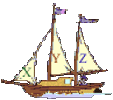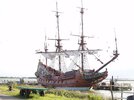- Joined
- 8 March 2007
- Posts
- 2,892
- Reactions
- 3,998


| DESCRIPTION | LAST | CHG % |
|---|---|---|
| Commodities | ||
| Steel | 64.54 | -1.57% |
| Lithium & Battery Tech | 54.17 | -1.81% |
| Strategic Metals | 64.32 | -3.03% |
| Gold Miners | 25.99 | -3.42% |
| Copper Miners | 35.13 | -3.52% |
| Uranium | 26.07 | -3.59% |
| Silver | 19.42 | -4.52% |
| Industrials | ||
| Agriculture | 21.58 | +0.79% |
| Construction | 49.97 | -0.97% |
| Aerospace & Defense | 104.78 | -1.12% |
| Global Jets | 16.79 | -1.41% |
| Healthcare | ||
| Biotechnology | 120.64 | -1.35% |
| Cannabis | 6.43 | -3.31% |
| DESCRIPTION | LAST | CHG % |
|---|---|---|
| Cryptocurrency | ||
| Bitcoin | 14.27 | +3.89% |
| Renewables | ||
| CleanTech | 10.47 | -4.30% |
| Solar | 49.43 | -4.56% |
| Hydrogen | 7.01 | -5.14% |
| Technology | ||
| Semiconductor | 476.04 | +0.50% |
| Robotics & AI | 24.7 | -0.08% |
| Cybersecurity | 24.27 | -0.08% |
| Cloud Computing | 18.78 | -0.27% |
| E-commerce | 18.02 | -0.39% |
| Video Games/eSports | 51.31 | -0.48% |
| FinTech | 19.98 | -0.79% |
| Electric Vehicles | 23.26 | -0.98% |
| Sports Betting/Gaming | 15.5814 | -1.79% |

No idea what the Mad Cap't is rabbiting on about, which is probably a good thing. I think I am permanently blocked. Hoorayplease block everyone.




I think I joined the banned crowd too lately by just doing the thump up on some posts.maybe he was confusing all those SAD icons with LIKEs.
he does seem rather confused
Haven't visited for a few days. What is going on El-Capitaan? You cannot threaten your viewers ... they will mutiny!I send you a final message As you have not appreciated my posts in the past You won't GET them in the Future
Muntineers get to walk the Mad Capt's gang plank far out to sea.Haven't visited for a few days. What is going on El-Capitaan? You cannot threaten your viewers ... they will mutiny!






Hello and welcome to Aussie Stock Forums!
To gain full access you must register. Registration is free and takes only a few seconds to complete.
Already a member? Log in here.